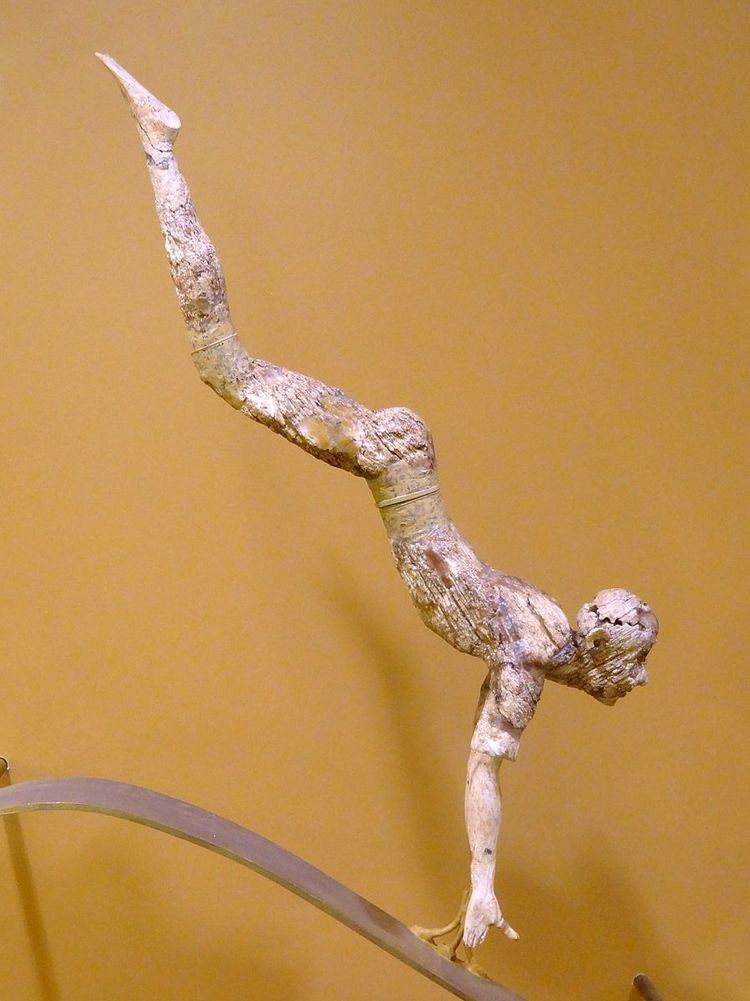Established 1883 Opened 1952 | Type Archaeological museum Phone +30 281 027 9000 | |
 | ||
Location Heraklion, Crete, Greece Address Xanthoudidou Street 1, Iraklio 712 02, Greece Hours Open today · 8AM–3PMFriday8AM–3PMSaturday8AM–3PMSunday8AM–3PMMonday11AM–5PMTuesday8AM–3PMWednesday8AM–3PMThursday8AM–3PM Similar Knossos, Koules Fortress, Historical Museum of Crete, Aquaworld Aquarium, Church of Saint Titus | ||
The Heraklion Archaeological Museum is a museum located in Heraklion on Crete. It is one of the greatest museums in Greece and the best in the world for Minoan art, as it contains the most notable and complete collection of artifacts of the Minoan civilization of Crete.
Contents
- Crete the heraklion archaeological museum 2015
- Overview
- Room I
- Room II
- Room III
- Room IV
- Room V
- Room VI
- Room VII
- Room VIII Zakros
- Room IX
- Room X Mycenaean
- Room XI Dorian
- Room XII
- Room XIII Larnakes
- Room XIV Hall of the Frescoes
- Room XV Room XVI
- Room XX Classical Greek Greco Roman
- Visitor information
- Notable artifacts
- References
Crete the heraklion archaeological museum 2015
Overview
The museum began in 1883 as a simple collection of antiquities. A dedicated building was constructed from 1904 to 1912 at the instigation of two Cretan archaeologists, Iosif Hatzidakis and Stefanos Xanthoudidis. After three destructive earthquakes in 1926, 1930, and 1935, the museum nearly collapsed. The director of the Heraklion Museum was then Spyridon Marinatos, who made great efforts to find funds and persuade the locals and the central government alike that a new solid building was needed. In 1935, Marinatos succeeded in engaging Patroklos Karantinos to build a sturdy structure that has withstood both natural disasters and the bombing that accompanied the German invasion in 1941. Although the museum was damaged during World War II, the collection survived intact and again became accessible to the public in 1952. A new wing was added in 1964.
The Herakleion Archaeological Museum is one of the largest and most important museums in Greece, and among the most important museums in Europe. It houses representative artifacts from all the periods of Cretan prehistory and history, covering a chronological span of over 5,500 years from the Neolithic period to Roman times. The singularly important Minoan collection contains unique examples of Minoan art, many of them true masterpieces. The Heraklion Museum is rightly considered as the museum of Minoan culture par excellence worldwide.
The museum, located in the town centre, was built between 1937 and 1940 by architect Patroklos Karantinos on a site previously occupied by the Roman Catholic monastery of Saint-Francis which was destroyed by earthquake in 1856. The museum's antiseismic building is an important example of modernist architecture and was awarded a Bauhaus commendation. Karantinos applied the principles of modern architecture to the specific needs of a museum by providing good lighting from the skylights above and along the top of the walls, and facilitating the easy flow of large groups of people. He also anticipated future extensions to the museum. The colours and construction materials, such as the veined polychrome marbles, recall certain Minoan wall-paintings which imitate marble revetment. The two-storeyed building has large exhibition spaces, laboratories, a drawing room, a library, offices and a special department, the so-called Scientific Collection, where numerous finds are stored and studied. The museum shop, run by the Archaeological Receipts Fund, sells museum copies, books, postcards and slides. There is also a café.
Most of the museum was closed for renovation from 2006 and reopened in May 2013.
The Heraklion Archaeological Museum is a Special Regional Service of the Ministry of Culture and its purpose is to acquire, safeguard, conserve, record, study, publish, display and promote Cretan artefacts from the Prehistoric to the Late Roman periods. The museum organizes temporary exhibitions in Greece and abroad, collaborates with scientific and scholarly institutions, and houses a variety of cultural events.
Room I
Covers findings from 6000 BCE to the pre-Palatial period, including:
Room II
Covers findings from 2000 BCE to 1700 BCE in Knossos, Malia and several peak sanctuaries, including:
Room III
Room IV
Covers findings from 1700 BCE to 1450 BCE, including:
Room V
Covers findings from 1450 BCE to 1400 BCE, including:
Room VI
Covers findings from cemeteries at Knossos, Phaistos and Archanes, including:
Room VII
Covers findings from 1700 BCE to 1300 BCE from smaller villas and sacred caves, including:
Room VIII – Zakros
Covers findings from 1700 BCE to 1450 BCE from the palace of Zakros, including:
Room IX
Covers findings from 1700 BCE to 1450 BCE in eastern Crete, including:
Room X – Mycenaean
Covers findings from 1400 BCE to 1100 BCE, including:
Room XI – Dorian
Covers findings from 1100 BCE to 900 BCE during the arrival of the Dorian Greeks, including:
Room XII
Covers findings up to 650 BCE, including:
Room XIII – Larnakes
Minoan larnakes (clay coffins) are on display here.
Room XIV – Hall of the Frescoes
Room XV & Room XVI
Room XX – Classical Greek, Greco-Roman
Sculptures from Classical Greek and Greco-Roman periods
Visitor information
The museum is open April–September, Monday 12–7pm Tuesday–Sunday 8am–7pm, October–March daily 8am–5pm.
EU students can receive a discounted entry.
There is air conditioning within the building.
Some of the collection cannot be photographed due to publication or another reason. There are usually signs posted nearby the restricted items.
